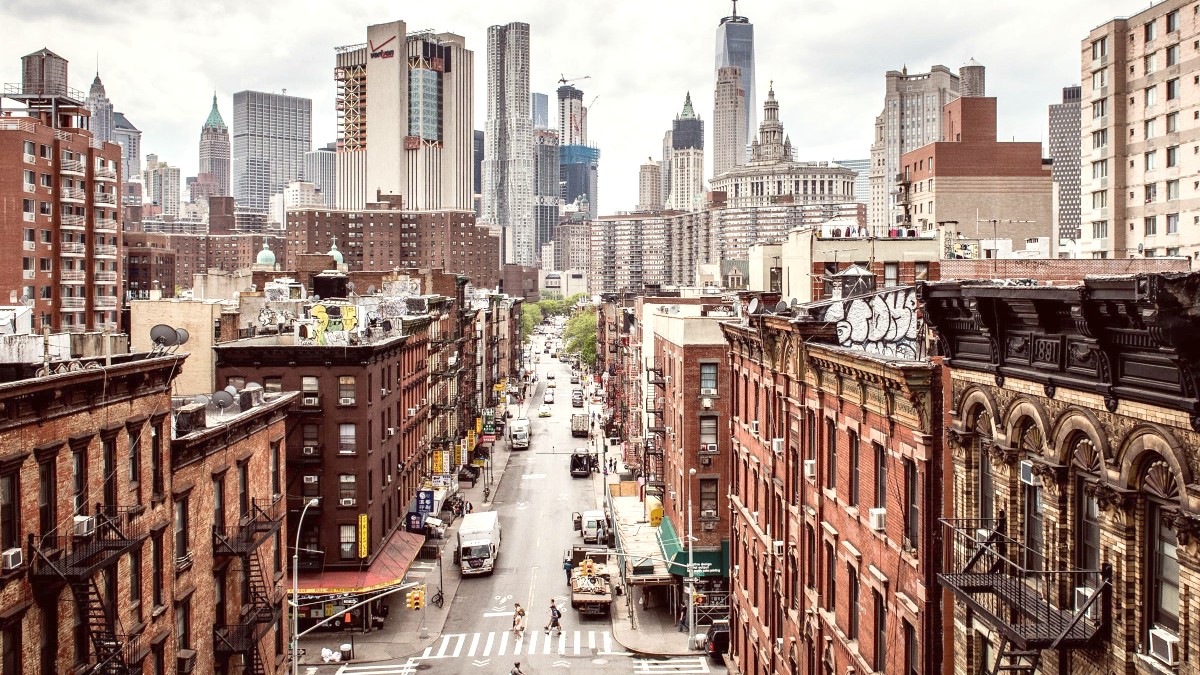
New York, USA
Manhattan experiences four distinct seasons, each with its own weather characteristics, from warm, humid summers to cold, snowy winters.
Spring and autumn deliver pleasant temperatures, while summer can bring high heat and winter deep cold.
High season (Summer and Holiday Season) buzzes with activity but faces crowds and higher prices.
Shoulder seasons (Spring and Autumn) present pleasant weather and moderate crowds, while low season (Winter, excluding holidays) offers lower prices with fewer people.
Summer & Holidays
city energy, extended daylight, numerous outdoor events.
High temperatures, large crowds, peak prices for travel and stays.
Spring & Autumn
Comfortable weather for walking, fewer crowds, moderate prices.
Can still be popular, early spring and late autumn colder.
Winter (Non-Holidays)
Lowest prices for accommodation and flights, fewer crowds.
Coldest time of year, potential snow, limited outdoor activities.
Summer heatwaves soar above 90°F (32°C); winter cold snaps drop below 20°F (-6°C).
Winter snowstorms disrupt transportation. Tropical storm remnants bring heavy rain in late summer/early autumn.
Most comfortable in Spring and Autumn.
Suitable for Spring, Summer, and Autumn, with more moderate temperatures in the shoulder seasons.
Enjoyable year-round, specifically in winter to escape the cold.
Experience festive decorations in November and December.
January and February offer post-holiday sales.
Entry requirements for the United States vary based on your nationality.
Citizens of 40 countries qualify for the Visa Waiver Program, permitting tourism or business travel for up to 90 days without a traditional visa.
If your country does not participate in the VWP, a B-2 visa for tourism becomes necessary. The application process comprises several steps.
Beyond ESTA or visa application fees, the U.S. Does not levy additional general entry fees for tourists.
Manhattan is recognized for its higher cost of living. Prices vary significantly based on your travel preferences.
The official currency utilized in the United States is the United States Dollar (USD or $).
Using ATMs linked to global networks often yields the best exchange rates. Inform your bank of your travel dates.
Expect to spend $100 - $200 USD per day. This involves hostel stays, street food, public transport, and free attractions.
Affordable meals: pizza slices, deli sandwiches.
Limited paid attractions or luxury experiences.
Anticipate $250 - $500 USD daily. This includes 3-4 star hotels, casual dining, and a blend of transport.
Comfortable stays and varied dining experiences.
High-end luxury dining is typically outside this range.
A budget of $600+ USD per day permits premium experiences: luxury hotels, fine dining, and extensive private transport.
Access to premier seating, guided tours, and upscale shopping.
Budget constraints are minimal at this level.
| Category | Budget | Mid-Range / Luxury |
|---|---|---|
| Accommodation (per night) | $40 - $80 (Hostel), $120 - $250 (Budget Hotel) | $250 - $500 (Mid-Range), $500 - $1000+ (Luxury) |
| Meals (per person) | $5 - $15 (Street Food) | $20 - $40 (Casual), $40 - $80 (Mid-Range), $100+ (Fine Dining) |
| Transportation | $2.90 (Single Ride), $34 (7-Day MetroCard) | $10 - $25+ (Taxi/Ride-Share) |
Consult a healthcare provider before your trip. No specific vaccinations are mandatory for entry.
Stay hydrated, adjust sleep gradually, adapt to local time immediately.
Practice good hand hygiene; wash hands frequently, avoid touching your face.
Use Sunscreen and protective clothing, especially in warmer months.
For Police, Fire, or Medical Emergency: Dial 911
Manhattan offers access to excellent healthcare facilities including world-class hospitals like NYU Langone Health.
Urgent care centers provide a quicker, often less expensive alternative for non-life-threatening issues.
Pharmacies like Duane Reade, CVS, and Rite Aid are widely available for medications.
Tap water in Manhattan is safe to drink; bring a Reusable water bottle.
Restaurants operate under strict health inspection regulations; look for letter grades (A, B, C).
Manhattan is generally safe for tourists; major areas are heavily policed.
Like any major city, petty crime, like pickpocketing, can occur. Remain aware of your surroundings, especially in crowded tourist spots.
Manhattan can experience Nor'easters in winter, bringing heavy snow and strong winds. Summer heatwaves occur, and localized urban flooding might happen with heavy rainfall.
Winter storms leading to heavy snow and travel disruptions.
Periods of extreme heat; seek air-conditioned spaces.
Heavy rainfall can cause localized urban flooding.